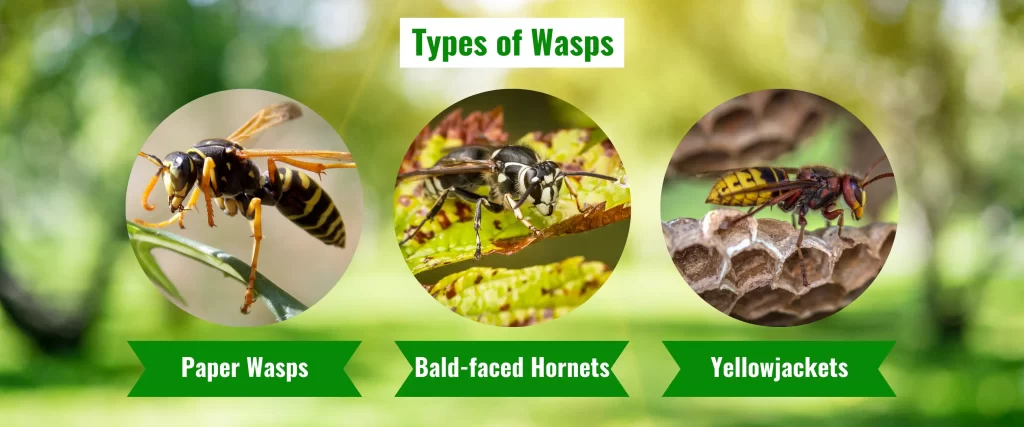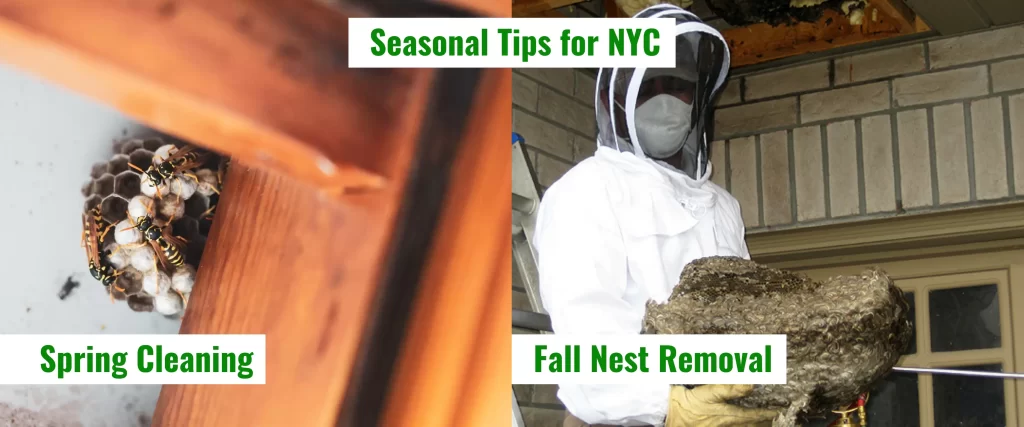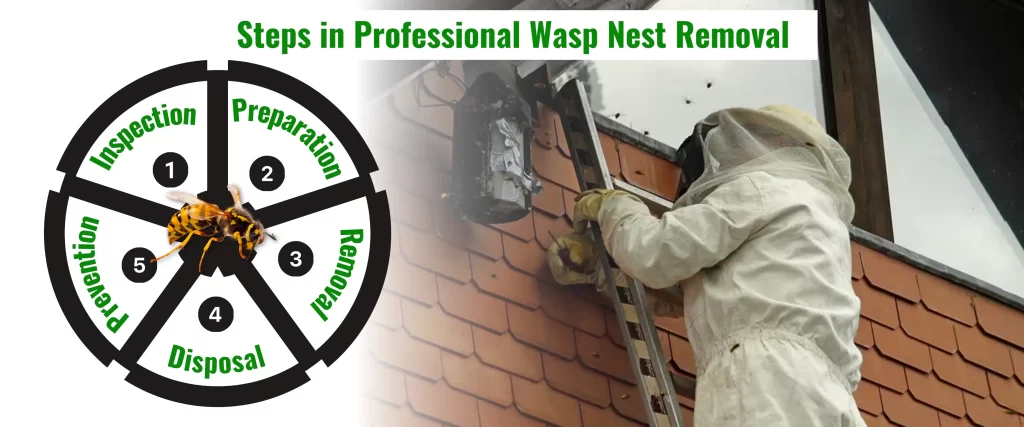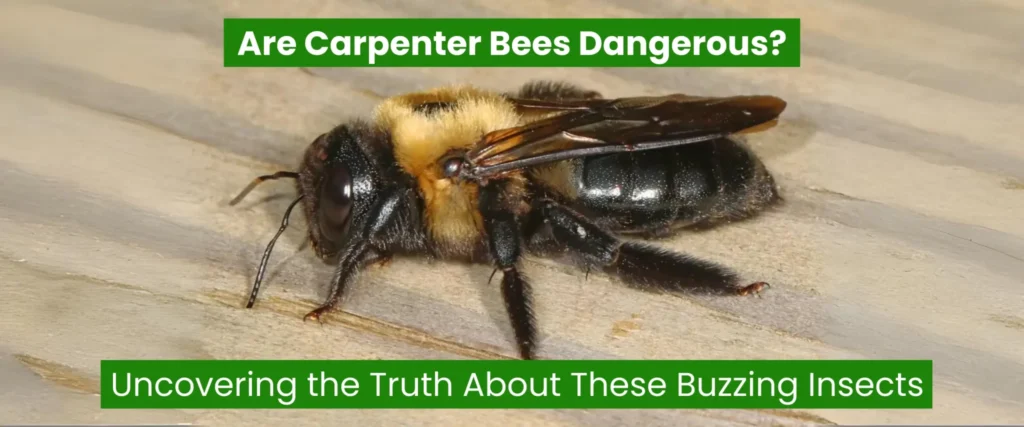
Effective NYC Wasp Nest Removal: Everything You Need to Know
Ever been enjoying a picnic in Central Park when a squadron of wasps decides your lunch spread is theirs? Or maybe you’ve heard the menacing buzz of a wasp nest lurking in your fire escape. Wasp encounters are a common experience in NYC, and dealing with a nest on your property can be a real stinger (pun intended!).
Safe and effective wasp nest removal is crucial in NYC. This blog will guide you through everything you need to know, from identifying a wasp nest to choosing the best removal method and preventing future infestations.
Whether you’re a seasoned New Yorker or a recent transplant, this guide to NYC wasp nest removal will help you keep your home and yard wasp-free.
Understanding Wasps
How Many Types Of Wasps Are There?

While there are over 30,000 identified wasp species worldwide, you’ll likely encounter a few common types in NYC. Here’s a quick rundown:
- Paper Wasps: These beneficial wasps build exposed, papery nests under eaves or overhangs. They’re generally less aggressive than other wasps unless their nest is disturbed.
- Bald-faced Hornets: These large wasps construct impressive, football-shaped nests in trees and shrubs. Though intimidating, they typically only attack if threatened.
- Yellow jackets: These social wasps are the familiar black and yellow buzzing insects you see around picnics. They build their nests underground or in cavities within walls. Unlike some wasps, yellow jackets can sting repeatedly.
Yellow Jackets and Wasps
Are yellow jackets a type of wasp? The ultimate answer to this question is Yes. They belong to the Vespidae family, which also includes hornets. Here’s a breakdown of their similarities and differences:
Similarities:
- Both have black and yellow markings.
- Both live in social colonies with a queen and worker wasps.
- Both have stingers and will use them to defend their nests or themselves.
Differences:
- Appearance: Yellow jackets are smaller than hornets. Bald-faced hornets have a distinctive white face, while paper wasps are slender with long legs.
- Nesting: Yellow jackets build underground nests, while paper wasps build exposed nests and bald-faced hornets build aerial nests.
- Aggression: Yellow jackets are generally more aggressive than paper wasps and bald-faced hornets, especially when defending their nest.
Wasp Behavior and Life Cycle
Does Wasps Die After They Sting?
Unlike honeybees, a wasp’s barbed stinger doesn’t detach after stinging. This allows them to sting repeatedly, injecting venom each time. So, no, wasps don’t die after stinging you.
How To Keep Wasps From Building Nests?
An ounce of prevention is worth a pound of cure (and a potential sting!). Here are some tips to keep wasps from setting up shop in your NYC home:
- Minimize Food and Drink Sources: Wasps are attracted to sugary drinks and leftover food scraps. Keep outdoor eating areas clean, dispose of garbage properly, and cover your drinks with lids when outside.
- Seal Up Potential Nesting Sites: Inspect your eaves, porches, and other outdoor areas for cracks or gaps. These are prime real estate for wasps looking to build a nest. Seal openings with caulk or weather stripping.
- Discourage Existing Wasps: Hang fake wasp nests around your property. Wasps are territorial and avoid building near existing colonies (even fake ones!). You can also try placing bowls of a solution of apple cider vinegar mixed with a few drops of dish soap near potential nesting areas. The scent may deter wasps.
Seasonal Tips for NYC:

- Spring Cleaning: Early spring is prime time for queen wasps to scout for nesting sites. This is the perfect time to inspect your property and seal up potential entry points.
- Fall Nest Removal: By fall, wasp nests are likely at their largest. If you discover a nest, it’s best to call a professional for safe removal. Don’t attempt to tackle it yourself, especially in the colder months when wasps become more aggressive.
NYC Wasp Nest Removal
DIY vs. Professional Removal
Removing a wasp nest yourself might seem tempting, but it’s important to weigh the risks and benefits:
DIY Removal:
Pros:
- Potentially cheaper (though improper removal can lead to property damage or medical bills).
Cons:
- Danger of Stings: Disturbing a nest can provoke an attack, leading to multiple stings.
- Incomplete Removal: Leaving behind even a small part of the nest can attract remaining wasps.
- Improper Disposal: Improper disposal of the nest can put you or others at risk.
Professional Removal:
Pros:
- Safety First: Trained professionals have the proper equipment and protective gear to remove the nest safely.
- Guaranteed Removal: They ensure the entire nest is removed, eliminating the wasp problem.
- Peace of Mind: You can relax knowing the job is done correctly.
The Importance of Hiring Professionals:
While DIY removal may seem like a cost-saving measure, the risks far outweigh the potential benefits. Professional NYC wasp nest removal experts are trained and equipped to handle the situation safely and effectively.
Steps in Professional Wasp Nest Removal

Here’s a general outline of what a professional wasp removal service might do:
- Inspection: The professional will identify the type of wasp and locate the nest.
- Preparation: The area around the nest will be secured to minimize exposure to people and pets.
- Removal: Depending on the situation, different removal methods might be used, such as insecticides or physical removal.
- Disposal: The nest will be safely removed and disposed of.
- Prevention: The professional can recommend steps to prevent future wasp infestations.
Safety Precautions:
Professionals prioritize safety during the process. This may involve wearing protective suits, using specialized equipment, and applying insecticides in a controlled manner.
Conclusion
Understanding wasps, their behavior, and how to prevent them from nesting on your property is key to keeping your NYC home wasp-free. By following the prevention tips outlined above, you can minimize the risk of encountering these stinging insects.
Benefits of Professional Removal
However, if you discover a wasp nest, don’t attempt to remove it yourself. Professional NYC wasp nest removal services offer a safe and effective solution. They have the expertise and equipment to handle the situation without putting yourself or others at risk.
Call to Action
Don’t wait until you’re facing a swarm of angry wasps! Take action today. If you suspect wasp activity or discover a nest, contact a reputable NYC wasp nest removal service.
FAQs:
Q: Can I remove a wasp nest myself?
A: It’s not recommended. DIY removal is risky and might not be effective. Professional removers have the expertise and safety gear to handle the job properly.
Q: What happens if I get stung by a wasp?
A: Most wasp stings cause pain, redness, and swelling. If you experience severe allergic reactions, seek immediate medical attention.
Q: How much does professional wasp nest removal cost?
A: Prices vary depending on the size and location of the nest. However, it’s generally cheaper than dealing with medical bills from stings or the cost of repairing property damage from an incomplete DIY removal.
Q: When is the best time to remove a wasp nest?
A: Early spring is ideal for prevention by sealing potential nesting sites. For active nests, call a professional in the warmer months. Avoid DIY removal in fall when wasps become more aggressive.
Q: How can I prevent wasps from nesting in my yard?
- Minimize outdoor food and drinks that attract them.
- Seal up cracks and gaps around eaves, porches, and potential nesting areas.
- Consider hanging fake wasp nests or using a vinegar solution to deter them.

